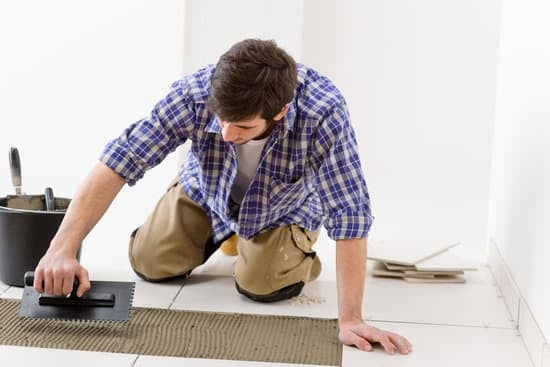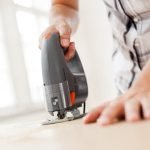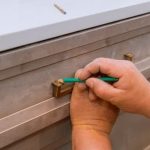In today’s modern world, it is nearly impossible to imagine life without a cell phone. These small devices have become an essential tool for communication, productivity, and entertainment. However, one of the most frustrating situations that can arise is poor cell phone service at home. Dropped calls, slow internet speeds, and weak signal strength can hinder our ability to stay connected and get things done.
In this article, we will explore various methods to improve cell phone service in the comfort of your own home. Understanding the importance of quality cell phone service is crucial in today’s fast-paced society where reliable communication is key. Whether you use your phone for work calls, socializing with friends and family, or streaming media content, having a strong and consistent signal at home can greatly enhance your mobile experience.
Before delving into the solutions to improve cell phone service in home, it is important to first analyze the challenges that affect signal strength indoors. By identifying factors such as building material interference or geographical location limitations, we gain a better understanding of the obstacles that need to be overcome for optimal signal reception.
Stay tuned as we explore different strategies for improving cell phone service at home, ranging from assessing different cellular provider coverage options to decoding how signal boosters function and benefit us. We will also delve into simple techniques that anyone can employ to optimize their signal reception and even consider more advanced options such as installing a personal cell phone tower or leveraging Wi-Fi networks for increased connectivity.
By empowering yourself with knowledge and implementing effective solutions outlined in this article, you will be well on your way to enjoying excellent cell phone service at home. No longer will you have to deal with dropped calls or frustratingly slow internet speeds when trying to accomplish tasks on your device. It’s time to take control of your cellular experience and ensure that you are always connected when it matters most.
Analyzing the Challenges
Physical Obstructions
One of the major challenges that affect cell phone signal strength in homes is physical obstructions. These can include buildings, walls, trees, and even hills or mountains in the surrounding area. These obstructions can block or weaken the signal between your phone and the cell tower, resulting in poor reception or dropped calls. Identifying any physical obstructions outside or inside your home is essential to understanding the factors affecting your cell phone signal strength.
Distance from Cell Tower
Another factor that plays a significant role in cell phone signal strength is the distance between your home and the nearest cell tower. The farther away you are from a tower, the weaker your signal may be.
This is especially true if you live in a rural area where towers are few and far between. Knowing how far you are from the nearest tower can help you determine whether you need additional equipment, such as a signal booster or external antenna, to enhance your cell phone service at home.
Interference from Electronic Devices
Interference from electronic devices within your home can also impact cell phone signal strength. Appliances like microwaves, cordless phones, televisions, and even Wi-Fi routers can emit signals that interfere with cellular frequencies, leading to a decrease in signal quality. It’s important to minimize interference by placing these devices away from areas where you typically use your phone or consider using shielding materials to reduce their impact on your cell phone service.
Weather Conditions
Weather conditions can also affect cell phone signal strength, particularly during severe storms or adverse weather events. Heavy rain, lightning strikes, high winds, and thick cloud cover can all lead to disruptions in cellular signals. While we cannot control or eliminate these weather factors entirely, being aware of them helps us understand why our signal may be weaker during certain conditions and allows us to take appropriate measures to mitigate any issues.
Assessing Cellular Provider Coverage
One of the primary factors that can affect cell phone signal strength in your home is the coverage provided by your cellular service provider. It is important to assess the coverage of different providers in your area to determine which one offers the best service for you.
Start by researching and comparing the coverage maps provided by different cellular providers. These maps usually indicate areas where their network coverage is strong, weak, or non-existent. Keep in mind that these maps are not always 100% accurate, so it may be worth checking with other people in your area who use a particular provider to get an idea of their experience with signal strength.
Another way to assess cellular provider coverage is through crowd-sourced websites and apps that collect data from users regarding signal strength and service quality. These platforms allow users to share their experiences and rate the performance of different providers in specific locations. By consulting these platforms, you can get a more accurate understanding of how reliable a service provider is in your area.
In addition to coverage, it is also important to consider factors such as data speed, call quality, and customer service when assessing cellular providers. You may want to read reviews or seek recommendations from friends and family members who use a particular provider before making a decision.
By thoroughly assessing the coverage and overall performance of different cellular providers in your area, you can make an informed choice about which one is likely to offer better cell phone service in your home. This step is crucial as it will lay the foundation for any further improvements you make to enhance cell phone signal strength at home.
Decoding the Role of Signal Boosters
Signal boosters are devices that can significantly improve cell phone signal strength in home. They work by amplifying the existing cellular signal, making it stronger and more reliable. Signal boosters consist of three main components: an outdoor antenna, an amplifier, and an indoor antenna.
One of the key benefits of using a signal booster is that it can provide better call quality and faster data speeds. With a stronger signal, you are less likely to experience dropped calls or slow internet speeds on your smartphone. This is especially important if you rely on your cell phone for work or other important tasks.
Cell phone signal boosters are also easy to install and use. The outdoor antenna is typically placed outside your home where there is good signal reception, such as on a roof or a wall. The indoor antenna is then placed inside your home, preferably in an area where you need improved signal strength the most. The amplifier connects the two antennas and boosts the signal between them.
When choosing a signal booster, it is important to consider factors such as compatibility with your cellular provider and the size of your home. Some boosters are designed for specific providers while others are more universal. Additionally, larger homes may require more powerful boosters to effectively cover all areas with improved cell phone service.
Optimizing Signal Reception
One of the most frustrating things to experience is having poor cell phone signal strength at home. Drop calls, slow internet connections, and inability to send texts can be a huge inconvenience. However, there are some simple techniques that you can implement to enhance cell phone signal strength in your home.
Firstly, one of the easiest ways to improve cell phone service at home is by strategically placing your device to maximize signal reception. Try moving closer to windows or higher areas of your house, as these locations often have better signal reception. Additionally, keeping your phone away from electronic devices such as TVs or microwaves can also help reduce interference and improve signal quality.
Another effective technique is to avoid obstructions that may hinder the cell signal from reaching your device. Objects like walls, furniture, and even trees can obstruct the cellular signals and weaken their strength. Therefore, it is recommended to place your device in an area with fewer obstacles or consider relocating furniture or other objects that may be obstructing the signals.
Lastly, using Wi-Fi networks instead of cellular networks can significantly enhance cell phone service at home. Most smartphones nowadays have the option for Wi-Fi calling, which allows you to make calls and send texts over a Wi-Fi network instead of relying on cellular towers. By connecting your device to a stable Wi-Fi network, you can maximize signal strength and enjoy clearer calls and faster internet speeds.
By implementing these simple techniques, you can enhance cell phone signal strength in your home without the need for expensive equipment or installations. Remember that optimizing signal reception might require trying different locations within your house before finding the best spot for consistent strong signals.
Installing a Home Cell Phone Tower
As cell phone usage becomes more prevalent and essential in our everyday lives, having reliable cell phone service at home is more important than ever. In some areas, however, weak signal strength or poor coverage can hinder the quality of our cell phone service. One solution to this problem is to install a home cell phone tower. This comprehensive guide will walk you through the process of setting up a personal cell phone tower.
Determine Your Needs and Requirements
Before setting up a home cell phone tower, it is important to determine your needs and requirements. Evaluate your current signal strength and coverage at home to assess if installing a personal tower is necessary. If you frequently experience dropped calls or have difficulty accessing data services, it might be worth considering this option. Additionally, take into consideration the number of devices that will be connected to the tower and their respective network requirements.
Research Available Options
Once you have determined that setting up a home cell phone tower is the right solution for you, it is time to research available options. There are various types of personal cell phone towers on the market, each with its own features and capabilities. Look for models that support multiple carriers, as this will ensure compatibility regardless of which cellular provider you choose. Research different manufacturers and read reviews from other users to find a reputable and reliable product.
Installation Process
The installation process of a home cell phone tower can vary depending on the model and manufacturer. It generally involves mounting an outdoor antenna on your roof or any other elevated position in order to capture strong signals from nearby cellular towers. The antenna then connects to an amplifier system inside your home which boosts the signal strength before distributing it throughout your house through indoor antennas or repeaters.
While specific steps may differ between installations, most manufacturers provide detailed instructions and guidelines in their user manuals. Follow these instructions carefully to ensure a proper and effective installation. It may be beneficial to hire a professional technician who specializes in cell phone tower installations to guarantee optimal results.
Installing a home cell phone tower can significantly improve your cell phone service at home, providing you with reliable signal strength and better coverage. By following the steps outlined in this guide, you can empower yourself to set up a personal cell phone tower that meets your needs and improves your overall communication experience.
Exploring Wi-Fi Calling
What is Wi-Fi Calling?
Wi-Fi calling is a feature that allows you to make and receive phone calls over a Wi-Fi network instead of using your cellular network. This technology utilizes your internet connection to transmit voice data in the form of packets, similar to how VoIP (Voice over Internet Protocol) works. Wi-Fi calling can be a game-changer for individuals living in areas with poor cellular coverage as it provides an alternative means of communication.
Benefits of Wi-Fi Calling
One of the main benefits of Wi-Fi calling is its ability to improve cell phone service in areas with weak or no cellular signal. By leveraging your home’s Wi-Fi network, you can enjoy crystal-clear calls without having to worry about dropped connections or choppy audio.
Additionally, Wi-Fi calling can help you save on cellular minutes and roaming charges if you have an international plan by allowing you to make calls from any location with a stable Wi-Fi connection.
Setting Up and Using Wi-Fi Calling
To take advantage of Wi-Fi calling, you need a compatible smartphone and a provider that supports the feature. Most modern smartphones, including both Android and iOS devices, have built-in support for Wi-Fi calling. Once enabled, your phone will automatically switch to using the available Wi-Fi network for calls when the cellular signal is weak or nonexistent.
To set up Wi-Fi calling on your device, navigate to the settings menu and look for the option related to “Wi-Fi calling” or “Internet call.” Turn on the toggle switch to activate the feature.
When making or receiving a call using Wi-Fi calling, it functions just like a regular call, so there’s no need for any additional apps or services. The recipient doesn’t even need to be aware that you are using Wi-Fi calling; they’ll simply receive the call as if it were placed through the usual cellular network.
Wi-Fi calling is a valuable tool for improving cell phone service at home, especially in areas with weak signals. By taking advantage of this feature and leveraging your Wi-Fi network, you can ensure dependable call quality and enjoy uninterrupted conversations from the comfort of your own home.
Troubleshooting Common Cell Phone Signal Problems
Signal problems are a common frustration for many people when using their cell phones at home. Poor signal strength can lead to dropped calls, slow internet speeds, and overall poor cellular service. However, there are several troubleshooting tips that can help address these signal issues and improve cell phone service at home.
One of the first steps in troubleshooting signal problems is to identify the source of the issue. There are several factors that can affect cell phone signal strength in a home. These include physical obstructions such as walls and furniture, distance from cell towers, and interference from other electronic devices. Identifying these factors can help determine the most effective solutions for improving signal strength.
Once the source of the problem has been identified, there are several troubleshooting techniques that can be implemented to enhance cell phone signal strength. One method is to move closer to a window or exterior wall where there may be better reception. Additionally, adjusting the placement of the router or modem in your home can help improve Wi-Fi calling capabilities.
Another solution is to use a signal booster or repeater. These devices amplify weak signals and extend coverage areas, providing improved cell phone service throughout your home. Signal boosters work by capturing existing cellular signals outside of your home, amplifying them, and then rebroadcasting the boosted signals inside.
In addition to these troubleshooting methods, it may also be beneficial to contact your cellular provider for assistance. They may have resources available to diagnose specific issues or provide recommendations for improving signal strength in your area.
By implementing these troubleshooting tips and techniques, you can address common cell phone signal problems and enjoy improved cell phone service at home.
| Troubleshooting Tip | Description |
|---|---|
| Move closer to a window or exterior wall | Physical obstructions can weaken cell phone signals, so moving to a location with better reception can help improve signal strength. |
| Adjust the placement of the router or modem | Moving the Wi-Fi equipment to a more central location in your home can enhance Wi-Fi calling capabilities and improve signal strength. |
| Use a signal booster or repeater | Signal boosters amplify weak signals and extend coverage areas, providing improved cell phone service throughout the home. |
| Contact cellular provider for assistance | Your provider may have resources available to diagnose specific issues or provide recommendations for improving signal strength in your area. |
Considering External Antennas
External antennas can play a crucial role in improving cell phone signal strength at home. These antennas, also known as outdoor or external antennas, are designed to capture and amplify weak signals from nearby cell towers, thereby enhancing the overall signal reception. Understanding the role and application of external antennas can help individuals make informed decisions when it comes to optimizing their cell phone service.
The primary function of an external antenna is to capture the existing cell signal and transmit it to the connected device, such as a cellphone or a signal booster. By placing the antenna outside your home, you can maximize its efficiency by minimizing signal interference caused by walls, obstacles, and other structures within the house. External antennas come in various types and designs, including omni-directional and directional antennas.
Omni-directional antennas receive signals from all directions. They are suitable for areas with multiple cell towers in different directions. On the other hand, directional antennas focus on capturing signals from one specific direction. These are often used in areas where there is only one nearby cell tower or when trying to target a specific carrier’s signal.
When considering the installation of an external antenna, several factors should be taken into account. These include the location of nearby cell towers, potential obstructions obstructing the signal path (such as tall buildings or mountains), and any local regulations or restrictions regarding antenna installation. Additionally, individuals should also consider whether they want to install the antenna themselves or hire a professional installer for assistance.
Installing an external antenna can significantly enhance cellular service at home by improving signal strength and reducing dropped calls or slow data speeds. However, it is important to note that while an external antenna can boost cell phone signals, it may not eliminate other factors that affect call quality or data speed such as network congestion or issues with your cellular provider’s infrastructure.
| Role | Application |
|---|---|
| Capturing and amplifying weak signals from cell towers | Enhancing overall signal reception at home |
| Types: Omni-directional and directional antennas | Choose according to the number and direction of nearby cell towers |
| Factors to consider: Location of nearby cell towers, obstructions, local regulations, installation method | Ensure optimal placement and adherence to guidelines |
By understanding the role and application of external antennas, individuals can make informed decisions about whether installing one would be beneficial for improving cell phone signal strength at home.
Conclusion
In conclusion, ensuring excellent cell phone service at home is essential in today’s connected world. By understanding the importance of quality cell phone service and analyzing the challenges that affect signal strength, individuals can take proactive steps to improve their connectivity.
One of the key factors in improving cell phone service is selecting the right cellular provider that offers strong coverage in the area. Doing thorough research and comparing different providers will help individuals find the best option for their specific needs.
Furthermore, signal boosters play a crucial role in enhancing signal strength within the home. These devices amplify weak signals and provide a more reliable connection for better call quality and faster data speeds. Additionally, optimizing signal reception through simple techniques such as adjusting device settings or relocating to areas with stronger signal can also make a significant difference.
For those looking for a comprehensive solution, installing a home cell phone tower or exploring Wi-Fi calling options are viable options to consider. A personal cell phone tower allows individuals to have complete control over their cellular coverage while leveraging Wi-Fi networks for calls can offer improved performance when indoors.
Lastly, troubleshooting common signal problems and considering external antennas are other effective strategies to address connectivity issues at home. Following these troubleshooting tips and understanding the application of external antennas can help individuals overcome obstacles and enjoy reliable cell phone service.
Frequently Asked Questions
How can I make my cell signal stronger at home?
There are several steps you can take to make your cell signal stronger at home. Firstly, consider positioning your router in a central location within your house to ensure maximum coverage. You can also try elevating the router, as placing it on a higher shelf or mounting it on a wall can help propagate the signal.
Additionally, minimizing interference from other electronic devices by keeping them away from your router can improve the signal strength. If you’re still experiencing issues, you might consider purchasing a cell signal booster or repeater, which amplifies the existing signal and extends its range throughout your home.
How can I boost my cell phone signal?
To boost your cell phone signal, there are a few strategies you can try. One method is to move closer to a window or go outside, as obstacles like walls and windows can weaken the signal. Another option is to switch your phone into airplane mode for a few seconds before turning it back on again; this simple action can sometimes help refresh connection with the nearest cell tower and potentially improve the signal.
You could also try updating your phone’s software or resetting network settings to see if that resolves any underlying connectivity issues. Additionally, investing in an external antenna or using a mobile signal booster specifically designed for individual use may significantly enhance your cell phone’s reception.
Why is my mobile signal so bad in my house?
There are multiple reasons why your mobile signal may be bad in your house. The construction materials used in buildings such as concrete and metal can hinder wireless signals from penetrating through walls efficiently, leading to weaker reception indoors. Distance from cell towers is another factor that affects signal strength; if you live far away or reside in an area with poor network coverage, it’s likely impacting your mobile signal quality at home as well.
Furthermore, environmental factors like dense foliage or geographical features such as hills and valleys may obstruct the propagation of signals and contribute to poor reception indoors. In some cases, nearby electronic devices emitting radio frequency interference might also disrupt cellular signals within residential spaces.

I’m thrilled to have you here as a part of the Remodeling Top community. This is where my journey as an architect and remodeling enthusiast intersects with your passion for transforming houses into dream homes.





